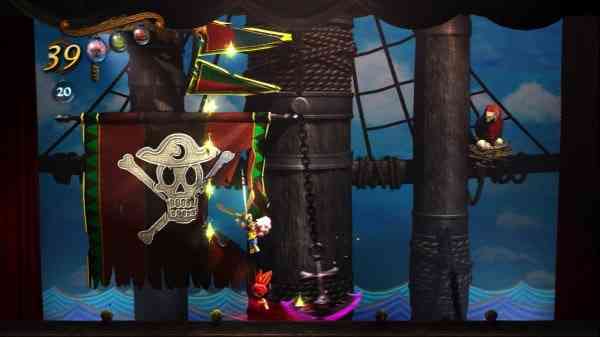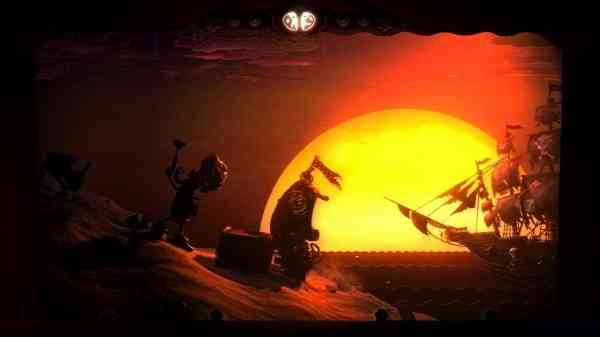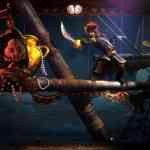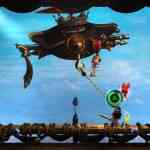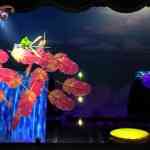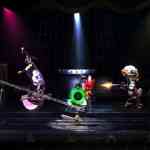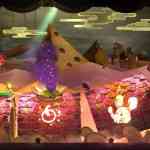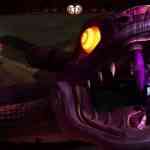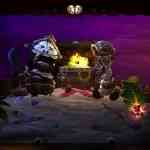As the current generation of consoles winds down and my focus begins to shift towards the next-generation I find myself trying to finish off many games that, for whatever reason, I hadn’t gotten around to playing or finishing. Puppeteer wasn’t on that list, but boy am I glad I had the chance to play this original and engaging game that was released by Sony Computer Entertainment.
The storyline in Puppeteer is about as farfetched as they come. You play as a boy named Kutaro who is kidnapped, turned in to a puppet and ultimately beheaded by a character named the Moon Bear King. Kutaro embarks on an adventure to find his head and overthrow the Moon Bear King. If you’re thinking WTF, it’s okay; as quirky as this might sound it works, it’s fun and it sets up the various gameplay elements well.
In order to properly understand some of these elements it is important to first understand the game’s aesthetics. Puppeteer is one of the more stunning and highly stylistic visual presentations in my recent memory. The entire game plays out as if you were in a theatre watching a stage production. Props and elements flip forwards and back almost like a pop-up book. It’s a terrific effect. The platforming style of play takes on a bit of a new life here because of how seamlessly elements of the stage and backgrounds fit together. There were times, especially when I first started playing, where I was not sure of what surfaces were interactive or exactly what to do. That being said, I found the art style to be awesome.
Puppeteer’s key gameplay element is a pair of magic scissors named Calibrus that Kutaro finds. The obvious use for these scissors is to fight bad guys. More interestingly though, they can be used to interact with the level designs and even create the perception of flight by jumping and linking cutting strokes across and through various surfaces and materials. It’s pretty neat.
Having no head is by no means less an important element. Various heads are found throughout the levels and can be swapped on the fly. Heads serve as a gameplay tool and they are also your primary health mechanic. Different heads open up different abilities which can be used to either defeat bad guys or access new or different areas of the game’s levels. When Kutaro incurs damage he loses his head. The head remains on screen for a short period and if you can get to it before it disappears, no harm no foul. If it disappears that specific head is lost and is replaced by another in your inventory. Don’t worry, heads aren’t exactly scarce.
Puppeteer also features a couple of “sidekick” characters named Ying Yang and Pikarina. This is where the game introduces how cooperative play is handled. During solo play these sidekick characters are controlled with the right thumb stick (while still allowing for direct control over Kutaro with the left stick) and are used primarily for exploration. When playing with a friend, the second player controls either Ying Yang or Pikarina and gets extra abilities that allow them to get more involved in the action while still maintaining a very simplistic control scheme. The hook here is that it is never required. This is an ideal way of introducing younger players to the game.
Puppeteer is the first game that I have played where 3D visuals truly enhance the gameplay. Part of it is that the game runs in 720p and therefore they don’t suffer any downgraded resolution that other games that run in 1080p do. 3D isn’t integral to the gameplay though, I just found the visual and gameplay experience much more immersive when it was on. 3D isn’t used simply as a gimmick with things popping out of the screen and the effect as a whole is well implemented. As noted earlier, the visuals and art style of Puppeteer is great and those who play it will really appreciate what has been done here.
The visual presentation is complemented by impressive voice acting and a good musical score. Puppeteer’s soundtrack is reminiscent of the Harry Potter movies. The game’s narrator is perhaps a little too similar to what is found in the Little Big Planet games though. Furthering the illusion of being in a theatre there is even audience whose responses correspond to the action on screen much like a live TV show taping. Overall, the audio portion of this game impresses.
Had I not been handed a copy of the Puppeteer for review duty I would have completely missed perhaps the most surprising title I have played this year. Puppeteer combines fun platforming gameplay, a playful narrative, and excellent presentation values. Oh, and if you have the ability to play this game in 3D I recommend that you make a point of it.
